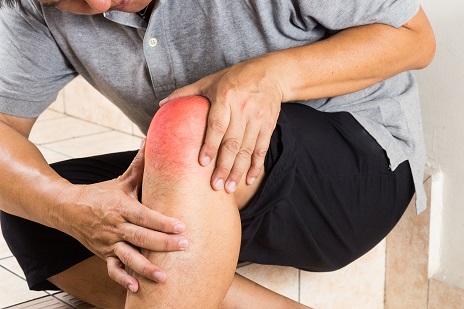Older men with symptomatic, radiographic knee OA at greater risk for injurious falls

Symptomatic, radiographic knee osteoarthritis is independently associated with an increased risk for medically-treated injurious falls among older men, but not women, according to study results published in Arthritis Care and Research.
“Interestingly, adults with knee arthroplasty do not appear to have an increased risk of falls compared with adults without knee arthroplasty, whereas knee instability has been shown to be associated with a greater prevalence of recurrent falls,” Kamil E. Barbour, PhD, of the CDC Division of Population Health’s Arthritis Program, and colleagues wrote. “Yet, injurious falls are an outcome of greater clinical and public health relevance. ... However, to our knowledge, the association between knee OA and incident injurious falls has not been examined.”
To analyze the link between knee OA — for both radiographic OA (ROA) and symptomatic ROA (sROA) — and injurious falls among community-dwelling older men and women, the researchers reviewed data from 734 participants in the Health Aging and Body Composition (Health ABC) Osteoarthritis cohort. Participants in that community-based substudy had been black and white men and women aged 70 to 79 years from field centers in either Pittsburgh, Pennsylvania, or Memphis, Tennessee, who had qualifying knee pain and X-ray at visit 2.

For their own study, Barbour and colleagues defined ROA as demonstrating a KellgrenLawrence grade of 2 or greater in at least one knee, and sROA as having both ROA and pain symptoms in the same knee. Injurious falls were defined using a diagnosis code algorithm from Medicare fee-for-service claims. Participants were followed from baseline enrollment date, from 1998 to 2000, until they experienced an injurious fall, death, loss of follow-up or through visit 11 in either 2007 or 2008. In testing for associations, the researchers used Cox regression modeling to calculate hazard ratios and confidence intervals.
According to the researchers, 255 of the 734 participants — or 34.7% — experienced injurious falls during the entire study period. In their multivariate model, the researchers found that participants with sROA (HR = 1.09; 95% CI, 0.73-1.65) did not have a significantly increased risk of injurious falls, compared with those without ROA or pain. However, men with sROA (HR = 2.57; 95% CI, 1.12-5.91) had a significantly higher risk for injurious falls, compared with men without ROA or pain. No links were found among women.
“To our knowledge this is the first study to examine knee OA and risk of treated incident
injurious falls,” Barbour and colleagues wrote. “We showed that knee sROA was associated with an increased risk of injurious falls among older community-dwelling men independent of many potential confounders. Knee OA was not a predictor of injurious falls overall, among women, or by injurious fall type (fracture versus non-fracture). Our findings suggest that knee sROA is a risk factor for injurious falls in men, but not women. Fall prevention efforts that target men with knee sROA are need to reduce injurious falls risk.” – by Jason Laday
Disclosure: Barbour reports grant funding from the NIH. Please see the study for all other authors’ relevant financial disclosures.


